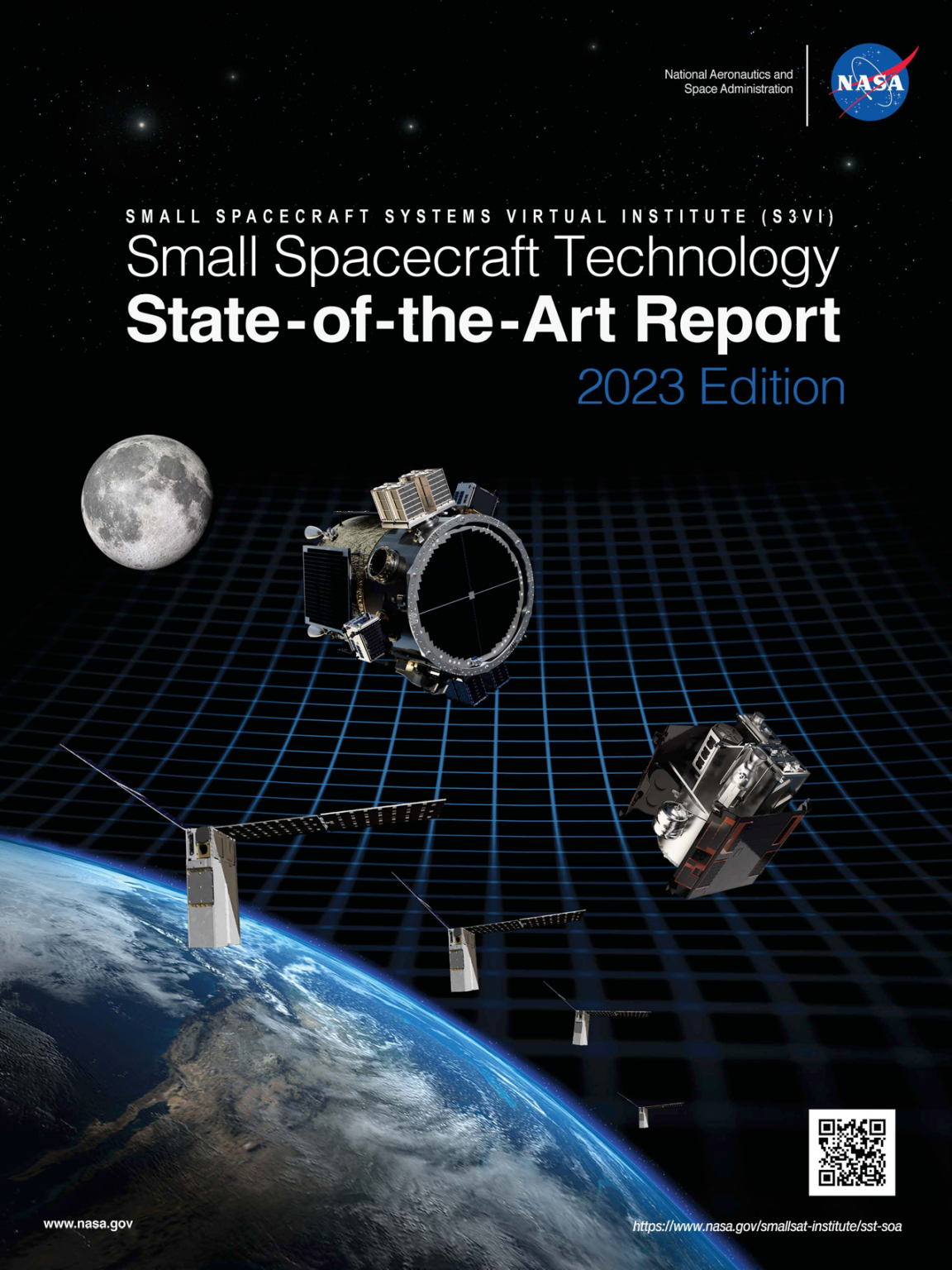NASA has selected eight university teams to collaborate on development and demonstration of new technologies and capabilities for small spacecraft. Each of the university teams will be working with engineers and scientists from NASA on two-year projects beginning this fall. All of these efforts are directed toward making small spacecraft into powerful but affordable tools for science, exploration, and space operations.
This is the second round of projects selected under the Smallsat Technology Partnerships initiative. Eleven projects that were selected in 2013 are nearing completion. Two of those projects have already secured NASA-sponsored launch opportunities to demonstration their newly developed technology in space. Due to the success of the original set of projects, annual solicitations for the Smallsat Technology Partnerships are now planned.
The selected project teams will have the opportunity to establish a cooperative agreement with NASA in which each university will be funded up to $100,000 each year. As part of the agreement, NASA will provide civil servant support for the collaborative work (up to one full time equivalent).
The newly selected projects are described below:
High Data Rate Ka-Band Software Defined Radio for Small Satellites
University Of Vermont, Burlington & Worcester Polytechnic Institute
PI: Tian Xia
NASA Collaborator: Wai Fong, GSFC
In this project, a collaborative research will be conducted to develop and test a new high performance yet compact Ka-band software defined radio suitable for small satellites including cubesats. The project will target a data rate of 500 Mbps and also seeks to develop a unit with a low cost.
Solid-State Inflation Balloon Active Deorbiter
University of Arkansas, Fayetteville
PI: Po-Hao
NASA Collaborator: Elwood Agasid, ARC
The proposed solid-state inflation balloon is a simple, reliable, low-cost, non-propulsive system for deliberate deorbit and control of downrange point-of-impact that is compatible with a full range of masses from 1kg to 180kg, from cubesats to microsats and altitudes up to 1000 km. The system uses a miniature solid-state gas generator chip to inflate a metalized polyimide balloon. Interactions with solar radiation pressure and the upper atmosphere will provide deorbiting drag.
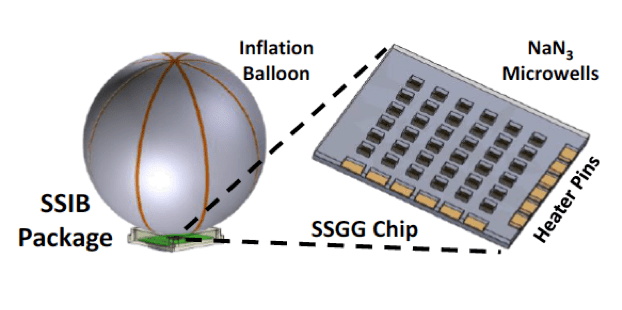
Miniaturized Phonon Trap Timing Units for Position, Navigation, and Timing of Cubesats
University Of Michigan, Ann Arbor
PI: Mina RaiesZadeh
NASA Collaborator: Serhat Altunc, GSFC
This proposal is directed towards development of a chip-scale timing unit (clock) with applications in small satellites, including cubesats. The speed and accuracy of the on-board clock directly affect the quantity and quality of data transmissions. This project tackles the technical challenges of developing a chip-scale, all-silicon, integrated clock that has 10 times better frequency stability compared to quartz-based clocks and 100 times lower acceleration sensitivity at 10 times higher speed. It is based on a new generation of phonon trap resonators that are compensated to reach unprecedented frequency accuracy and stability. In addition, precision chip-scale clocks have application in many other systems including GPS.
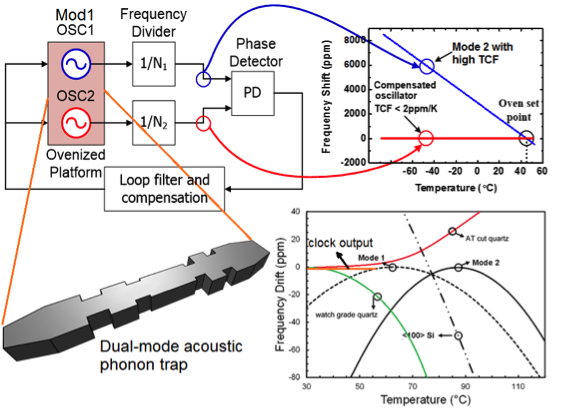
Propellantless Attitude Control of Solar Sails Using Reflective Control Devices
University of Maryland, College Park
PI: Jeremy Munday
NASA Collaborator: Tiffany Russell, MSFC
Solar sails offer an opportunity for propellant-free space travel, enabling long-term and long-distance missions not capable with traditional methods. However, attitude control is still performed using traditional methods involving reaction wheels and propellant ejection. We propose propellantless attitude control using a polymer-dispersed liquid crystal film, which is able to switch between transparent and diffusely-reflective upon application of a voltage. This technology will remove the need for propellant, which will reduce weight and cost while improving performance and lifetime for solar sail missions.
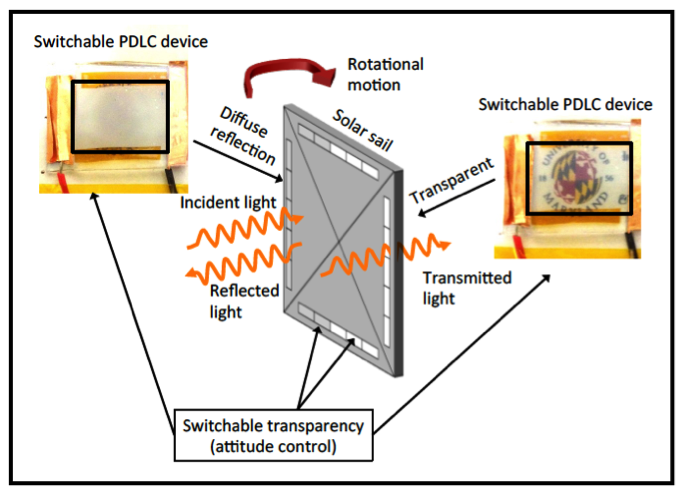
Integrated Solar Panel and Antenna Array for Cubesats
Utah State University
PI: Reyhan Baktur
NASA Collaborator: Serhat Altunc, GSFC
The integrated solar panel and antenna array for cubesats is an efficient, compact, high gain, low power consumption, lightweight, small volume, X-band antenna array to support high data rate downlinks (up to 50 Mbps). The antenna design is optically transparent and the approach is to design a high-gain antenna array with optically transparent elements then print it with conductive ink directly onto the cover glass of solar cells. We plan to validate the concept on a cubesat flight project at Utah State University. The design will be scalable and can be adapted to Near Earth Network, Space Network, and Deep Space Network radios.
Small Spacecraft Integrated Power System with Active Thermal Control
University Of Illinois, Urbana-Champaign
PI: Alexander Ghosh
NASA Collaborator: Elwood Agasid, ARC
The project will develop an integrated power generation and energy storage system with an active thermal management system that is scalable from 6U cubesats up to 100 kg small satellites. Carbon fiber solar panels will contain micro-vascular fluid channels and provide battery cooling and a cold plate for other satellite devices. In a 6U configuration, a three-panel array can generate over 100 W and produce over 50 W of cooling. This project will significantly increase the capabilities of deep space cubesats, allowing more powerful and hotter spacecraft systems than are currently available.
Film-Evaporation Reaction Control System Small Spacecraft
Purdue University
PI: Alina Alexeenko
NASA Collaborator: Eric Cardiff, GSFC
The film-evaporation Micro-Electro-Mechanical Systems (MEMS) tunable array (FEMTA) concept was initially developed by Purdue University and NASA Goddard as part of a 2013-2015 STP project. It utilizes micro-scale effects in fluid surface tension to achieve up to 700 µN thrust with under 0.1 W of power and within a 0.1 U system volume. The FEMTA can also reject waste heat and can be used for thermal control in addition to providing small amounts of thrust for attitude corrections and to desaturate reaction wheels. The next generation FEMTA will also incorporate micro-shutters based on NASA Goddard technology to eliminate quiescent state evaporation thereby extend the working lifetime.
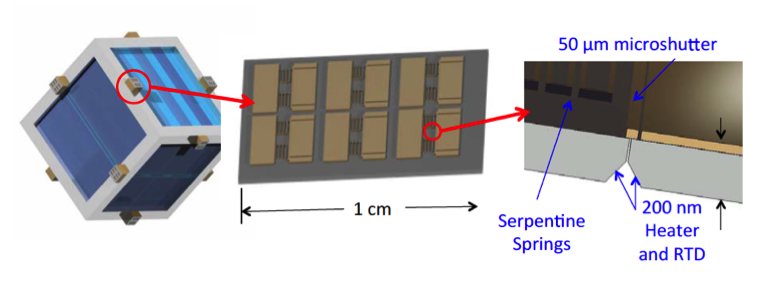
Active CryoCubeSat
Utah State University
PI: Charles Swenson
NASA Collaborator: A.J. Mastropietro, JPL
The Active CryoCubeSat will advance the technology of active thermal control methods for cubesats and miniature cryogenic coolers to support operation of scientific instruments at temperatures in the 75-100K range. Such thermal systems will enable a new generation of cubesat science missions. The cooling system will include a mechanically pumped, fluid-loop thermal control system followed by a pulse-tube cryogenic cooler. Additive manufacturing will be used to integrate the fluid loop within the cubesat structure with embedded conformal coolant channels.
The team involves experts at Utah State University in spacecraft systems, electro-optical instrumentation and thermal systems coupled with JPL’s expertise in mechanical pumped fluid loop thermal control systems and additive manufacturing.



























